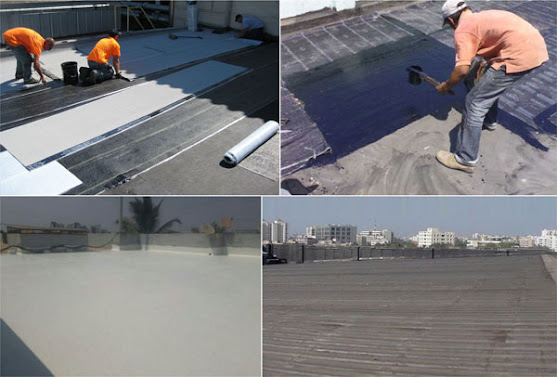What Are The Different Types Of Roof Waterproofing Materials?
Introduction to Roof
Waterproofing Materials - Definition, Purpose and Benefits
Roof waterproofing materials are designed to protect structures from the elements. They are used to keep water from entering a building or other construction and provide insulation from heat and cold. Roof waterproofing materials can be used on any roof, from flat roofs to pitched roofs, and can be applied in various ways.
Bituminous Membranes
- Properties and Advantages
Bituminous membranes are waterproofing materials composed of special asphalt binders placed over substrates such as concrete, plywood, or metal. They come in two forms - hot-applied and cold-applied.
Polymer Modified
Bitumen - Properties and Advantages
Polymer-modified bitumen (PMB) is a type of wall crack repair products India that combines bitumen with a polymer, such as styrene butadiene styrene (SBS). It is highly resistant to weathering, abrasion, and cracking, making it an ideal material for waterproofing roofs.
Liquid Applied
Membranes - Properties and Advantages
Liquid-applied membranes are a type of waterproofing material that is applied in liquid form over the roofing surface. They are composed of polymers and solvents mixed to create a thick, adhesive film. This film is then left to harden and form a water-resistant barrier that prevents water from getting into the underlying layers of the roof.
Polyurethane Liquid
Membranes and Reinforced Cementitious Membranes - Properties and Advantages
Polyurethane liquid membranes, also known as liquid-applied waterproofing membranes, are famous for water leakage solution in Delhi substrates. These membranes are composed of polyurethane and are typically applied with a spray or roller. They can also be used with a paintbrush or trowel. Due to their flexibility, they can be applied to many different surfaces, including metal and concrete.
In conclusion, top waterproofing companies in India are essential to keeping your roof in good condition and protecting your property from water damage. Different types of waterproofing material offer different levels of protection, so choosing the suitable material for the job is essential. All waterproofing materials have pros and cons’, so weighing the options and selecting the best fit for your needs is crucial. The most critical factor in any waterproofing project is proper installation, so follow the manufacturer's instructions and use a professional for any complex or challenging installations. With suitable materials and installation, your roof should be well-protected against water damage for years to come.




Comments
Post a Comment